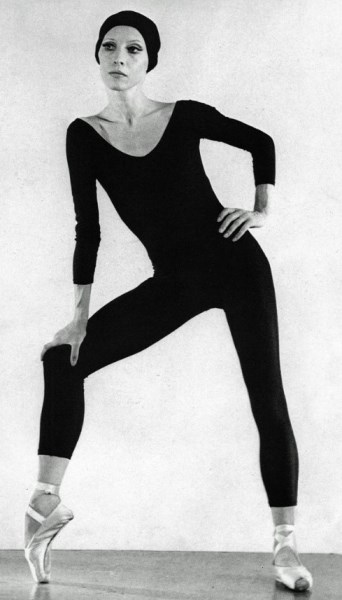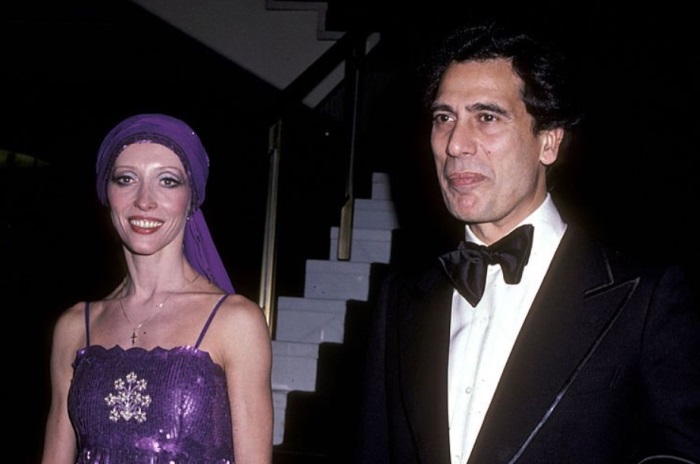The Honor of the John F. Kennedy Center for the Performing Arts is a special recognition of the lifetime contributions of artists to American culture.
The 2012 list highlighted the presence of Natalia Makarova – a remarkable choreographer and ballerina of all time.
From introducing ballet to the West, Natalia left a legacy on American and the world’s ballet history.
What’s more about her, and how did she choose ballet as her life-long career? Let’s explore her biography, career part, her net worth, and more.
Table of Contents
Who Is Natalia Makarova
Natalia Makarova (full name: Natalia Romanovna Makarova; in Russian: Ната́лия Рома́новна Мака́рова) is a Russian ballerina and choreographer.
Natalia (or Natasha) was born and raised in the homeland of classical ballet, Leningrad, Soviet Union (now St. Petersburg, Russia), on November 21, 1940. Her nickname is Natasha.
From her homeland, Natalia moved to the West and became the first ballerina of her generation to exit the Soviet Union and be successful abroad.
She made countless contributions to America’s and the world’s ballet history. Along Swan Lake, Giselle, a ballet performance initially with Kirov Ballet, is among her signature roles as a ballerina.
Natalia is listed among the most influential classical dancers of all time. She has been actively working in ballet from the 1950s till her retirement in 1989.

Natalia Makarova’s Family
Natalia wasn’t born into a family of dancers or artists. Most of her family members were scientists. Thus, her path into dance was a coincidence and an extraordinary destiny.
She married three times. Her two previous husbands were in the Soviet Union. One was an unknown ballet dancer, and the second was Leonid Kvinikhidze (a dance director).
In 1976, she moved to Bay Area, San Francisco. Here, she met the current love of her life – Edward Karkar, a Lebanese telecommunications industrialist.
Together, they had a son named Andrei Mikhail in 1978. One year later, she received the Mother of the Year Award.
Edward died in 2013 at the age of 81. After the death of Edward, she stayed as a widow till now.
In an interview with the New York Times (1978), Natalia revealed her feeling about being a mom.
Her motherhood has completely changed her personal life and somehow affected her life-long with dance. To her, Andrei was the biggest creation of her life.
Natalia Makarova’s Height And Weight
Natalia has a “corp de ballet” (as in an interview with the Washington Post). She has a height of 5 feet (around 1.6m). Yet, there is no information on her weight.
She has the delicate beauty of a ballerina.
In middle age, she was still photogenic with a firm jaw, catlike angularity, and blue eyes. Her fashion lifestyle is a mix of California casual and retro chic of the 1970s.
Behind that tiny body is a long history of a CEO, a super dancer, and a commander.
She was also the first Russian ballerina to exit the Soviet Union and reached her career’s peak during the Cold War.
Natalia Makarova’s Net Worth
The net worth of Natalia Makarova, as updated in 2023, is $5 million.
Natalia Makarova’s Early Life and Education
Much of her early life and education are hidden from the public. There is only one thing for sure, Natalia wasn’t born into a family of artists. Her achievements mainly result from her talent and diligence.
She started dancing at a very young age. She began her ballet foundation at 12 at the Imperial Ballet School (now Leningrad Choreographic School).
She excelled in class and completed the nine-year course in only six years, which was profound evidence of her natural talent and skills in dance.
After graduating in 1959, she joined the ballet industry and received many awards and recognition for her talent.
Check more: Gillian Murphy: Biography, Height, Net Worth & More
Natalia Makarova’s Dancing Career
After finishing her education, Natalia joined Kirov Ballet (now the Mariinsky Ballet) and became a rising ballerina.
From Russia To The West
In 1970, on a work trip with the Kirov in London, England, she stayed here to expand her career path. Here, she performed one of her signature roles – Giselle.
Instead of imitating other dancers or following the instructor’s orders, Natalia Makarova always loves to dance in her unique voice. She began with solo roles and moved to principal roles very quickly.
She made her first move in the Western by joining the American Ballet Theater (ABT) in New York City.
At ABT, she acted in many memorable ballets, namely Romeo and Juliet by Kenneth MacMillan, Les Sylphides, Manon, A Month in the Country, Song of the Earth, Dances at a Gathering, Voluntaries, Onegin, Elite Syncopations, Swan Lake, The Sleeping Beauty, and of course, Giselle.
She restored the dramatic impact of the classical ballet La Bayadère (after the performance of Marius Petipa in 1974) by reconstructing the last act in 1974.
First, she made her first performance of “Kingdom of the Shade” (an excerpt in the La Bayadère) for American Ballet Theater in 1974.
Then, in 1980, she became the director of this full-length ballet work.
Not only at ABT, but Natalia also staged the production of La Bayadère through other ballet houses, including the Royal Ballet, Tokyo Ballet, La Scala Ballet, Hamburg Ballet, Australian Ballet, Dutch National Ballet, Dutch National Ballet, Teatro Colon, Stanislavsky Ballet, Teatr Wielki, National Ballet of Kiev, the National Ballet of China.
From America To London
In a TV series on BBC named “Arena” on December 1975, Natalia and her dance partner, Mikhail Baryshnikov, applied to be the director of the American Ballet Center.
Disappointed with not being the chosen applicant, she moved to work officially at the Royal Ballet of London in 1972.
Besides the Royal Ballet, Natalia also worked for other well-known ballet houses. Some are The National Ballet of Canada, the Ballet of the Paris Opera, Maurice Béjart’s Ballet of the XXth Century in Brussels, and the Ballet of La Scala in Milan.
Alongside ABT and the Royal Ballet of London, Natalia also worked for numerous ballet houses in the West, including Covent Garden, Royal Ballet, London Festival Ballet (England); Roland Petit’s Ballets de Marseille (France); La Scala Ballet (Milan, Italy); Hamburg Ballet (Germany), and Maurice Bejart’s Ballet of the 20th Century.
A Mix Of Classical And Contemporary Repertoire
The vast repertory of Natalia Makarova while in the West includes the classical ballet and contemporary repertoire of great choreographers.
Her two most famous classical roles are Odette/Odile (Swan Lake) and Giselle.
At the same time, she expanded her choreography by performing works of modern choreographers.
Some highlighted contemporary ballets for this Russian ballerina are:
- Other Dance (by Jerome Robbins, with Baryshnikov);
- Pas de Deux (by MacMillan, with MacLeary);
- Le Rossignol (by Ashton, with Dowell);
- Mephisto (by Bejart, with Donn);
- Epilogue (by Neumeier, with Bruhn);
- Blue Angel (by Petit), etc.
She got the Evening Standard Award (1985) in London, presented by Princess Diana for her role as Onegin (Cranko).
Natalia debuted her first musical Broadway comedy, On Your Toes.
This comedy won various awards, including the Tony Award for Best Actress, the Stanislavsky Award, the Drama Desk Award, the Astaire Award, etc., in 1983, and the Laurence Olivier Award (for the West End production of this comedy) in 1984.
Makarova and Company
Natalia Makarova also had her dance company – Makarova and Company.
The company started on October 7, 1980, but lasted only 28 performances before its closing date on November 2, 1980.
Not Limited Herself To Ballet
Natalia Makarova is a hard-working artist. She didn’t set her limit in ballet. She reached out to other forms of arts, like painting, theatre-acting, and writing.
Some documentaries like “Great Railway Journey-St. Petersburg to Tashkent” and “Natasha” in 1994 greatly reflected her onstage career.
Homecoming And Retirement
Natalia Makarova retired from dancing due to shoulder and knee injuries.
She returned to her first ballet house – Kirov Ballet, after 19 years of working in the West. She acted in an excerpt from Swan Lake (August 6th, 1988, London).
One year later, she was the first Russian dance artist to be invited back to her homeland before the fall of the Soviet Union.
In this historic homecoming, she gave her farewell performance as a professional ballet dancer on the Kirov stage on February 1, 1989.
After retiring, Natalia donated her dance costumes and shoes to the Kirov Museum.
A Lasting Influence On The World History Of Ballet
Natalia Makarova is an excellent example of how hard work and trusting your instincts can bring you new opportunities.
This talented Russian ballerina utilized her gifted dance skills to leave a legacy in ballet via some most treasured classical and contemporary ballets.
She published her memoir in 1979 – “A Dance Autobiography.”
In 2012, she was listed as an honoree at the Kennedy Center – a well-known list for the lifelong contributions of artists to American art history.
Natalia received many nicknames, such as “prima ballerina assoluta” or “first lady of ballet.” These nicknames praise her super work in the industry.
Natalia, along with Nureyev, Baryshnikov, Nijinsky, and Malakov, is strong evidence that the greatest ballet dancer of all time will always be a Russian.
Natalia Makarova’s Awards
- Varna International Ballet Competition (1965)
- Honored Artist of the RSFSR (1969)
- Anna Pavlova Prize & Critic’s Award (1970)
- Dance Magazine Award (1977)
- Mother of the Year Award (1979)
- A Dance Autobiography (1980)
- Tony Award (1983, for Best Actress in a Musical)
- Drama Desk Award (1983, for Outstanding Actress in a Musical)
- Theatre World Award (1983)
- Astaire Award (1983)
- Outer Critics Circle Award (1983)
- Stanislavsky Award (1983)
- Laurence Olivier Award (1984, for Best Actress in a Musical)
- London Evening Standard Award (1985, for the Best Performance in the ballet Onegin)
- Emmy Award Nomination for Ballerina (1986)
- American Library Association Award (1991/1992)
- Distinguished Artist Award (1993)
- Artistic Achievement Award (2000)
- Artistic Achievement Award (2004)
- Kennedy Center Honor (2012)
- Life Achievement Award (2018)
Final Words
In sum, Natalia Makarova is a role model of a talented ballerina, a true Russian woman, and a hard-working artist.
From her first steps in the Soviet Union, she reached out to the West and made a lot of achievements in her ballet career.
Her countless performance and contributions were forever highlighted in the world’s history of ballet. They are a source of inspiration to new generations of dancers.

